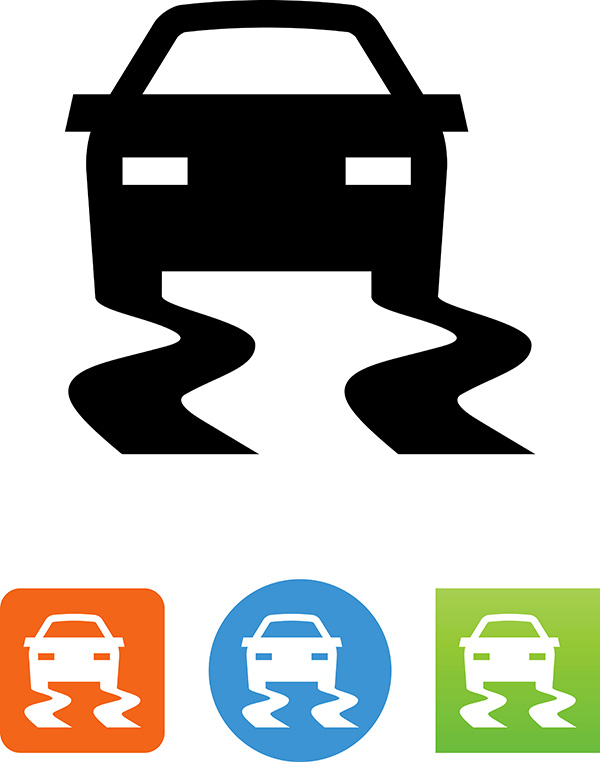
When navigating winding roads on a rainy day, your car's tires can struggle for grip. Without a system designed to assist in these moments, you'd likely find yourself skidding or losing control. This is where traction control steps in to help you and ensure vehicle safety. But how exactly does it work, and what makes it such an essential component of modern vehicles?
The Basics of Traction Control
Traction control is more than just a flashy feature on your car's dashboard. It's a sophisticated system that plays a vital role in maintaining your vehicle's stability. Its main job is to prevent wheel slip by adjusting power distribution or applying brakes to specific wheels. By doing so, traction control helps ensure that your tires maintain the best possible grip on the road, even in challenging conditions.
When driving through a patch of ice or on loose gravel, your wheels might start spinning uncontrollably, losing traction and stability. Traction control intervenes precisely at these moments, stepping in to correct the imbalance before it leads to a skid or loss of control. It works seamlessly with other vehicle systems, like anti-lock braking systems (ABS) and electronic stability control (ESC), to keep you firmly planted on the road.
The Mechanics Behind Traction Control
So, how does traction control actually function? It all boils down to a combination of sensors, electronic controls, and brake modulation. Each wheel of your vehicle is equipped with a speed sensor that constantly monitors its rotation. When these sensors detect a wheel spinning faster than the others—indicating a loss of traction—the system activates.
Here's the fascinating part: traction control systems can adjust engine power or apply braking force to the spinning wheel. If a wheel starts to slip, the system can either reduce the power being sent to that wheel or apply the brakes to slow it down. This intervention helps the wheel regain traction and prevents the vehicle from skidding or sliding. The process happens in a fraction of a second, ensuring that you stay in control even in tricky driving conditions.
Benefits of Traction Control
Traction control offers many benefits that enhance safety and driving comfort. For starters, it significantly reduces the risk of skidding and loss of control, particularly on slippery or uneven surfaces. Whether you're driving in the rain, snow, or on loose gravel, traction control helps maintain stability and prevents dangerous wheel spin.
Moreover, this system adds a layer of confidence for drivers. Knowing that your vehicle is equipped with traction control allows you to drive with greater assurance, especially when conditions are less than ideal. The system's ability to react quickly and effectively means you can focus more on driving safely rather than constantly adjusting to changing road conditions.
When Does Traction Control Come into Play?
Traction control is particularly useful in a variety of driving situations:
- Wet or Icy Conditions: When roads are slick from rain or ice, traction control helps prevent wheel slip and maintain stability, reducing the risk of skidding.
- Loose or Gravel Roads: On loose surfaces, traction control keeps your wheels from spinning excessively, ensuring better traction and control.
- During Hard Acceleration: If you accelerate quickly, especially on slippery surfaces, traction control helps manage wheel spin and maintain grip.
Common Misconceptions About Traction Control
Despite its effectiveness, there are some common myths about traction control. One misconception is that it can completely eliminate the risk of skidding. While traction control is incredibly useful, it can't counteract all driving errors or extreme conditions. It's still crucial to drive cautiously and adjust your speed according to the road conditions.
Another myth is that traction control can improve your vehicle's overall performance. While it helps maintain control, it doesn't enhance your vehicle's speed or handling capabilities. It's a safety feature designed to prevent loss of control, not a performance enhancer.
Maintaining Your Traction Control System
To ensure your traction control system functions correctly, regular maintenance is key. Here are a few tips to keep it in top shape:
- Regular Inspections: Have your traction control system checked during routine maintenance to ensure all sensors and components are working properly.
- Tire Care: Maintain proper tire pressure and tread depth, as well-maintained tires are essential for effective traction control.
- Brake System Maintenance: Since traction control works with your ABS, keeping your brake system in good condition is crucial for overall performance.
Drive safely with a fully functional traction control system. Let European Auto Motors handle your vehicle's maintenance and repairs. Call us today to learn more and schedule your service!